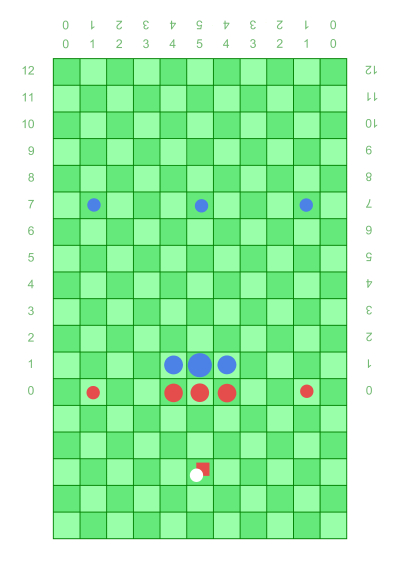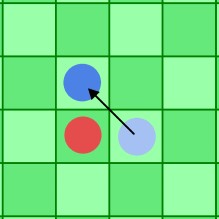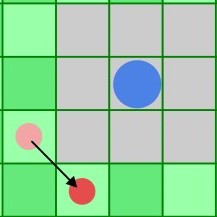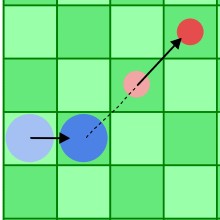passing rushing blocking tackling
an exhilerating game of logic
A game consists of two halves. At the start of each the half the pieces are set out as shown below. The player who attacks in the first half defends in the second. The player who scores the most points wins. In both halves the attacker goes first. (In the diagram the red team is attacking).
In the diagram the ball is represented by a small white circle, the Quarterback by a square, a Single by a large circle, and a Triple by a small circle. A medium sized circle represents a Double.
The attacker tries to score as many points as he can and the defender tries to stop him. The attacker tries to carry or pass the ball up field until either the ball carrier is tackled or a pass is intercepted. E.g. The ball carrier is tackled on a square that lies on row eight and column four. He scores 8 + 4 = 12 points. If a pass is intercepted then no points are scored.
Players flip a coin to see who attacks first.





.jpg)
.jpg)
